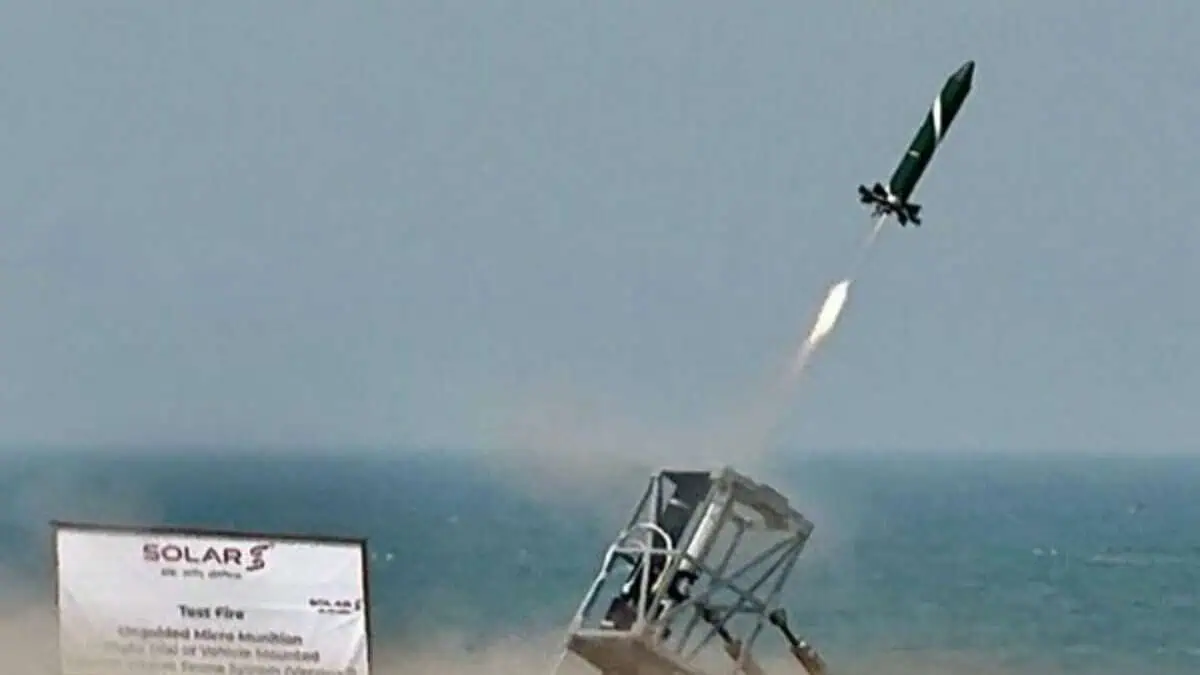
New Delhi: India achieved a significant milestone in its counter-drone capabilities with the successful test firing of its low-cost, hard-kill counter-swarm drone system, ‘Bhargavastra’, at the Seaward Firing Range in Gopalpur on Wednesday, May 14.
The system met all specified performance targets and is being hailed as a major advancement in the country’s ability to neutralise the emerging threat of drone swarms.
Developed indigenously by Solar Defence and Aerospace Limited (SDAL), ‘Bhargavastra’ is a powerful addition to India’s defence arsenal, particularly in its mission to secure airspace from unmanned aerial threats.
Successful trials validate combat readiness
The micro rockets that form the heart of the system underwent rigorous testing in Gopalpur and successfully achieved all designated objectives, indicating a high level of operational readiness.
Three separate trials of the rocket system were carried out on May 13 in the presence of senior officials from the Army Air Defence (AAD). Two of these tests involved the firing of individual rockets, while the third was conducted in salvo mode, launching two rockets within a span of just two seconds.
All four rockets met the required launch parameters, highlighting the system’s robust technological foundation and its potential to combat large-scale drone incursions effectively.
Dual-layered defence with advanced tracking
According to SDAL, ‘Bhargavastra’ offers a unified and advanced solution to counter the growing threat from Unmanned Aerial Vehicles (UAVs), especially drone swarms.
The system has the capability to detect and neutralise small, fast-moving drones at distances of up to 2.5 km.
It utilises unguided micro rockets as its primary defensive layer, designed to destroy multiple drones within a lethal radius of 20 metres.
For precision strikes, a guided micro-missile — which has already undergone successful testing — forms the second defensive tier, ensuring pinpoint accuracy.
The system is engineered to function efficiently across varied terrains, including high-altitude areas exceeding 5,000 meters above sea level.
This design feature addresses the complex operational challenges faced by India’s armed forces in difficult and strategic regions.
Made in India with global implications
SDAL has highlighted the indigenous nature of the technology, emphasising the in-house development of both the dedicated rockets and micro-missiles.
‘Bhargavastra’ is also designed with modularity in mind, allowing for the integration of a soft-kill layer that can include jamming and spoofing elements, thereby offering a comprehensive and multi-dimensional shield against UAV threats.
A key feature of ‘Bhargavastra’ is its seamless compatibility with India’s existing network-centric warfare systems.
The counter-drone system includes a Command-and-Control Centre that integrates advanced C4I (Command, Control, Communications, Computers, and Intelligence) technologies.
Its radar systems are capable of detecting even minute aerial threats at a range of 6 to 10 km, and the Electro-Optical/Infrared (EO/IR) sensor suite enhances its ability to accurately identify Low Radar Cross-Section (LRCS) targets.
By providing comprehensive situational awareness, the system empowers operators to respond dynamically, whether the threat involves a single drone or an entire swarm.
This capability ensures rapid evaluation and proportional countermeasures, significantly strengthening India’s air defence posture.
SDAL has highlighted the global relevance of the system, stating that while many advanced countries are developing similar technologies, a cost-effective, domestically designed multi-layered counter-drone solution with integrated swarm neutralisation like ‘Bhargavastra’ has not yet been deployed anywhere else in the world.
This successful test firing marks another milestone under the “Make in India” initiative and reflects the nation’s commitment to bolstering indigenous defence manufacturing.
With the inclusion of ‘Bhargavastra’, India takes a major step forward in securing its skies and reinforcing its already formidable air defence network.



